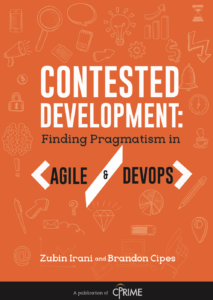Turn down (the speed) for what?
In the song, “Turn Down for What,” Lil Jon raps a total of 11 different words. Four of them are, “Turn Down for What?” which, it turns out, is a rhetorical question – and contains a warning for DevOps practitioners.
After a highly scientific review of Urban Dictionary and other academic(ish) sources, the question “Turn down for what?” appears to mean, “Why would you stop partying? What scenario could compel that choice?”
In DevOps, we fall into a similar trap with speed. In the Waterfall days, companies released software once per year or maybe once a quarter. Agile and DevOps cranked up the pace from months to weeks to days to hours to minutes. Moving fast became an end itself. Now, “Turn down (the speed) for what?” has become a rhetorical question. Or so it would seem.
The craze for speed is partly practical. If you release more often, you learn and improve quicker. However, speed is partly cultural and therefore conditioned. In Contested Development, our new ebook about Agile and DevOps, SysAid CEO Sarah Lahav put it this way:
“Companies need to roll out changes quickly because Facebook, Twitter, Netflix, etc. have set high expectations for all tech companies – not just consumer platforms. We’re supposed to introduce changes all the time yet maintain quality.”
DevOps makes speed plus quality uniquely possible. But what do we mean by “quality”?
Consumer tech companies operate in a constant state of experimentation where the risks of mistakes are minimal. A bug on Facebook, Twitter, or Netflix probably won’t cause a nuclear power plant to melt down. They release multiple times daily because the upside, a ‘sticky’ new feature that increases use, offsets potential downsides.
More use equals more ad revenue for Facebook and Twitter. More use equals greater ‘lifetime customer value’ for Netflix. Thus, to these companies, “quality” is whatever encourages people to use the app more often or for longer stretches of time.
However, a company that makes accounting software, industrial automation technology, or IT service management platforms like SysAid’s can’t afford mistakes. They turn “Turn down for what?” Quality, once again.
With solid enough test and DevSecOps automation, you could release updates to business technology multiple times daily without blowing anything up. But why? Quality isn’t the absence of bugs. Quality is an output of purpose.
Whereas Twitter wants users to spend more time in the app, a business platform might aim for the opposite. Less time in the app might mean that users are completing tasks or finding information more efficiently. New features wouldn’t necessarily add value and could, in fact, detract from the experience by cluttering up a workflow.
So, releasing more often isn’t necessarily better for business technology. Turn down to interview customers and discern what they need in the next release. Turn down to better gauge how users responded to your previous changes. Turn down to put experience ahead of novelty.
If you must turn up, read about how in Contested Development. It’s like a party for your brain.




